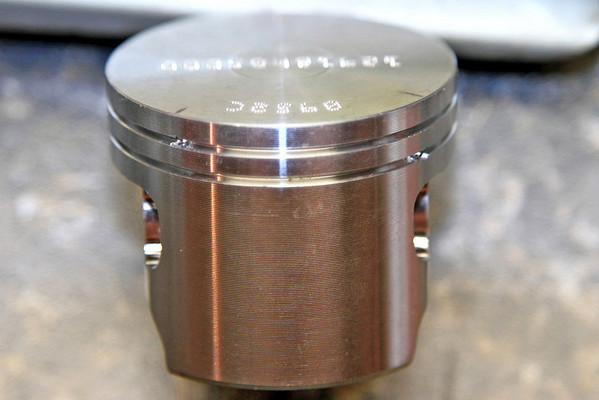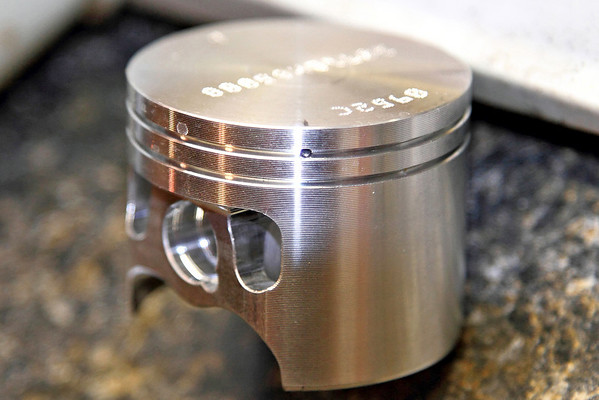The wrist pin being able to move off center isn't going to hurt anything, the rod will stay well centered with plenty of contact area with needle bearings in actual use.
I still don't get a "warm and fuzzy" putting things together that could be better. I'd opt for a longer bearing with less movement anyhow, last resort would be to fabricate/obtains some small/hardened spacers to keep the bearing centered better.
I'm not an expert on these little engines when it comes to weight of the reciprocating and spinning parts. Common sense would drive me to want the finished piston weight on par with the weight of an OEM piston.
Brad, for accurately measuring the bores, a low cost and easy method is to obtain some telescoping gauges, they have round ends on them. Been using them here for decades, and with a little practice you can accurately measure bore sizes, mic the piston at the widest part of the skirt, and come up with actual piston to wall clearance.
Most modern allows used for forgings do not require much clearance, at least in comparison to older designs. Cast pistons being of completely different construction/materials hold their dimensions, shape, diameter better than forgings, and can be set up tighter. In automotive applications, we used to have to run .0035-.0055" piston to wall clearance with forged pistons. The cast pistons typically .0005-.0015". No problem at all with modern forgings at .002" if a torque plate is used for final bore finish.
The key with piston clearance, is to make sure that it doesn't absorb enough heat and expand enough to "drag" in the bore. In most cases they will make the needed clearance and continue to run. If too tight, of course, the smear enough material to lock up and/or comprimise ring seal, etc.
Another advantage to a casting is less piston "rock" with a cold engine. This increases engine life as the rings don't wear out as fast. I would certainly want the saw engine fully warmed up before burying a 24" bar in a hard peice of Oak....FWIW.....Cliff
I still don't get a "warm and fuzzy" putting things together that could be better. I'd opt for a longer bearing with less movement anyhow, last resort would be to fabricate/obtains some small/hardened spacers to keep the bearing centered better.
I'm not an expert on these little engines when it comes to weight of the reciprocating and spinning parts. Common sense would drive me to want the finished piston weight on par with the weight of an OEM piston.
Brad, for accurately measuring the bores, a low cost and easy method is to obtain some telescoping gauges, they have round ends on them. Been using them here for decades, and with a little practice you can accurately measure bore sizes, mic the piston at the widest part of the skirt, and come up with actual piston to wall clearance.
Most modern allows used for forgings do not require much clearance, at least in comparison to older designs. Cast pistons being of completely different construction/materials hold their dimensions, shape, diameter better than forgings, and can be set up tighter. In automotive applications, we used to have to run .0035-.0055" piston to wall clearance with forged pistons. The cast pistons typically .0005-.0015". No problem at all with modern forgings at .002" if a torque plate is used for final bore finish.
The key with piston clearance, is to make sure that it doesn't absorb enough heat and expand enough to "drag" in the bore. In most cases they will make the needed clearance and continue to run. If too tight, of course, the smear enough material to lock up and/or comprimise ring seal, etc.
Another advantage to a casting is less piston "rock" with a cold engine. This increases engine life as the rings don't wear out as fast. I would certainly want the saw engine fully warmed up before burying a 24" bar in a hard peice of Oak....FWIW.....Cliff





























































